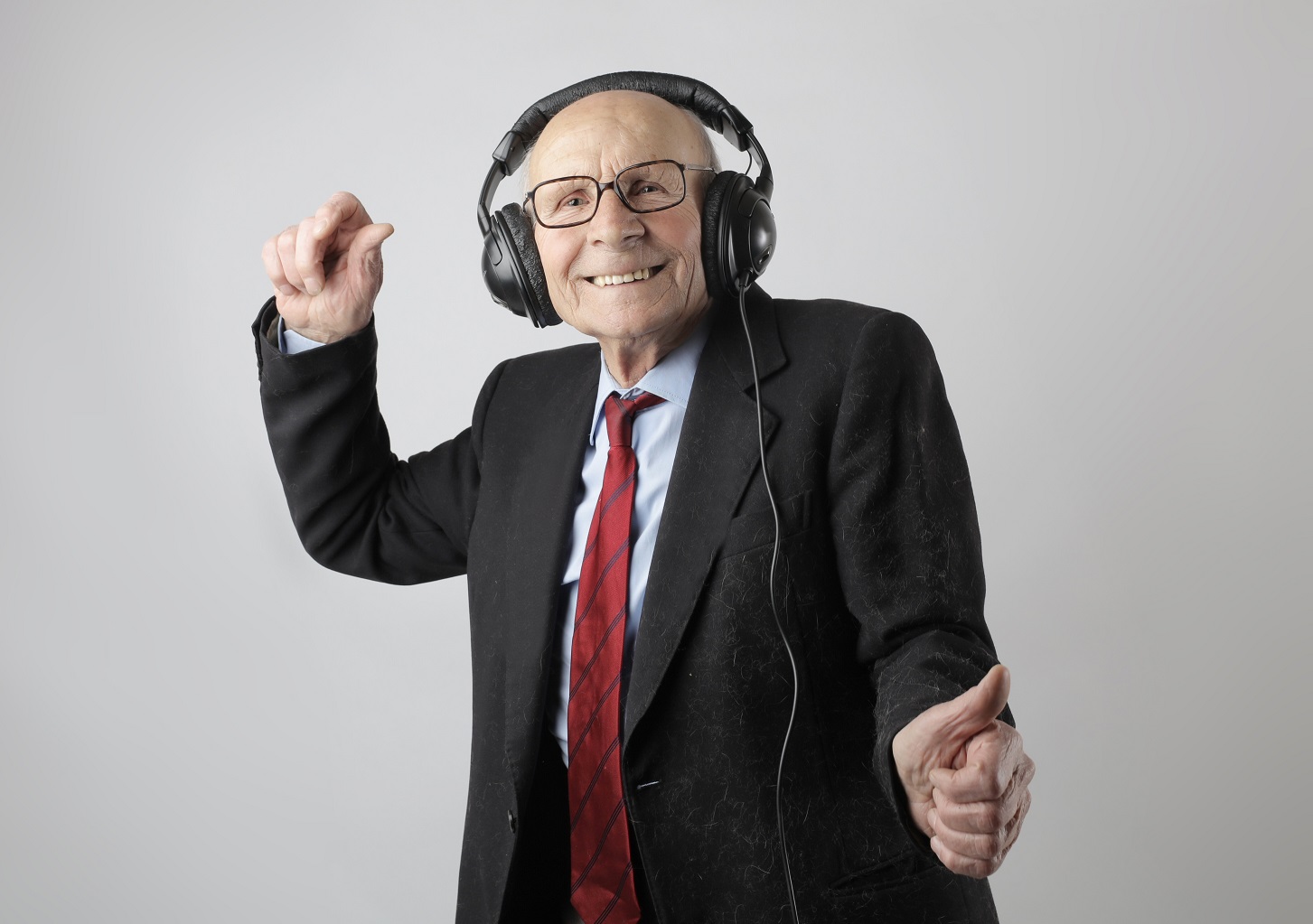
As an advanced Zen master, I am often asked whether it is possible to meditate with electronic dance music (EDM). My answer is that it is certainly possible, but it depends on the individual and the type of meditation practice they are engaging in.
Meditation is a practice that involves focusing the mind on a particular object or sensation in order to cultivate a state of calmness, clarity, and awareness. Traditionally, meditation has been practiced in quiet, peaceful environments that allow practitioners to cultivate a deep sense of inner stillness and concentration. However, in recent years, there has been an increasing interest in using music as a tool for meditation, including EDM. (and yes Korolova is my go to DJ for advanced EDM Meditation, watch for headaches if you are not used…)
The use of music in meditation is not a new concept. In fact, music has been used for centuries in religious and spiritual practices to enhance the meditative experience. Music has been found to have a profound effect on the mind and body, and can be used to induce states of relaxation, focus, and even altered states of consciousness.
EDM, in particular, is a genre of music that is characterized by its upbeat, energetic rhythms and pulsing basslines. While EDM may not seem like an obvious choice for meditation, many people have found that it can be a powerful tool for cultivating mindfulness, focus, and relaxation.
One of the benefits of using EDM for meditation is that it can help to energize the mind and body. The fast-paced rhythms and driving beats of EDM can help to stimulate the brain and increase alertness and focus. This can be especially helpful for people who struggle with staying alert and focused during traditional meditation practices.
Another benefit of using EDM for meditation is that it can help to create a sense of euphoria and bliss. The high-energy beats and pulsing basslines of EDM can stimulate the release of dopamine and other feel-good neurotransmitters in the brain, which can create a sense of pleasure and well-being.
However, it is important to note that not all types of meditation practices are suitable for use with EDM. For example, practices that require deep concentration and inner stillness, such as Zen meditation or Vipassana, may not be compatible with the energetic rhythms of EDM.
On the other hand, practices that involve movement and physical activity, such as yoga or qigong, may be well-suited to EDM. In fact, many yoga and fitness studios now offer classes that combine EDM music with movement and breathwork.
Ultimately, whether or not EDM is a suitable tool for meditation depends on the individual and their specific needs and preferences. Some people may find that the high-energy beats of EDM are too distracting and overwhelming, while others may find that it helps to enhance their focus and concentration.
If you are interested in trying EDM for meditation, it is important to approach the practice with an open mind and a spirit of experimentation. Start by selecting a few tracks that you find energizing and uplifting, and try meditating while listening to them. Pay attention to how your mind and body respond, and adjust your practice as needed.
It is also important to remember that music should never be used as a substitute for traditional meditation practices. While music can be a powerful tool for enhancing the meditative experience, it should always be used in conjunction with traditional mindfulness practices such as breathwork, visualization, and introspection.
In conclusion, the use of EDM for meditation is a matter of personal preference and individual needs. While EDM may not be suitable for all types of meditation practices, it can be a powerful tool for enhancing focus, energy, and relaxation. As with all meditation practices, it is important to approach the practice with an open mind and a spirit of curiosity, and to always be willing to adjust and adapt your practice as needed.
Styles of Electronic Dance Music
Electronic dance music (EDM) is a genre of music that originated in the 1980s and has since become one of the most popular forms of music in the world. It is characterized by its use of electronic instruments, synthesizers, drum machines, and software to create high-energy, danceable beats. While EDM encompasses a wide range of styles and subgenres, there are a few main styles that are commonly recognized in the industry. In this article, we will explore some of the most popular styles of electronic dance music.
1. House
House music is one of the most iconic styles of electronic dance music, and it originated in the clubs of Chicago in the early 1980s. It is characterized by its four-on-the-floor beat, which is a steady, repetitive rhythm that is easy to dance to. House music is also known for its use of synthesizers, pianos, and vocal samples, which are often used to create a soulful, uplifting sound.
There are many subgenres of house music, including deep house, progressive house, and tech house. Deep house is known for its use of soulful vocals and smooth, melodic basslines, while progressive house is characterized by its layered, evolving soundscapes. Tech house, on the other hand, is known for its use of heavy, driving basslines and minimalistic percussion.
2. Techno
Techno is another iconic style of electronic dance music that originated in Detroit in the 1980s. It is characterized by its use of repetitive, mechanical rhythms and heavy basslines. Techno is often associated with the underground rave scene and is known for its hypnotic, trance-like quality.
There are many subgenres of techno, including acid techno, minimal techno, and Detroit techno. Acid techno is known for its use of the Roland TB-303 synthesizer, which creates a distinctive, squelchy sound. Minimal techno, on the other hand, is characterized by its stripped-down, minimalist sound, with a focus on rhythm and percussion. Detroit techno, which is often considered the original style of techno, is characterized by its use of complex rhythms, intricate melodies, and futuristic soundscapes.
3. Trance
Trance is a style of electronic dance music that emerged in the early 1990s and is characterized by its use of melodic synthesizers and uplifting, euphoric melodies. Trance is often associated with the European club scene and is known for its soaring, anthemic sound.
There are many subgenres of trance, including progressive trance, vocal trance, and uplifting trance. Progressive trance is characterized by its use of layered, evolving soundscapes and complex melodies, while vocal trance is known for its use of powerful, emotional vocals. Uplifting trance, which is often considered the most euphoric subgenre of trance, is characterized by its uplifting melodies and high-energy beats.
4. Dubstep
Dubstep is a style of electronic dance music that emerged in the early 2000s and is characterized by its use of heavy basslines, aggressive rhythms, and syncopated beats. Dubstep is often associated with the UK club scene and is known for its dark, gritty sound.
There are many subgenres of dubstep, including brostep, which is characterized by its use of aggressive, in-your-face basslines, and deep dubstep, which is characterized by its use of sub-bass frequencies and atmospheric soundscapes.
5. Drum and Bass
Drum and bass is a style of electronic dance music that emerged in the UK in the early 1990s and is characterized by its use of fast, breakbeat rhythms and heavy basslines. Drum and bass is often associated with the underground club scene and is known for its high-energy, frenetic sound.
There are many subgenres of drum and bass, including liquid drum and bass, which is characterized by its smooth, melodic soundscapes and rolling basslines, and jungle, which is known for its use of complex breakbeats and intricate drum programming.
6. Dub
Dub is a style of electronic dance music that emerged in Jamaica in the 1960s and is characterized by its use of heavy basslines, echoes, and reverbs. Dub is often associated with reggae music and is known for its stripped-down, bass-heavy sound.
There are many subgenres of dub, including dub techno, which is characterized by its use of techno rhythms and dub effects, and dubstep, which has taken inspiration from the dub sound to create a heavy, bass-driven sound.
7. Ambient
Ambient is a style of electronic music that is characterized by its atmospheric, textured soundscapes and minimalistic rhythms. Ambient music is often used as a background soundtrack for meditation, relaxation, and other calming activities.
There are many subgenres of ambient music, including dark ambient, which is characterized by its eerie, unsettling soundscapes, and new age ambient, which is known for its use of natural sounds, such as bird song and ocean waves.
8. Electro
Electro is a style of electronic dance music that emerged in the 1980s and is characterized by its use of vintage synthesizers and drum machines. Electro is often associated with the electro-funk sound of the 1980s and is known for its robotic, futuristic sound.
There are many subgenres of electro, including electroclash, which is characterized by its use of punk-inspired vocals and edgy, aggressive soundscapes, and electro house, which fuses the electro sound with the four-on-the-floor beat of house music.
9. Breakbeat
Breakbeat is a style of electronic dance music that is characterized by its use of broken, chopped-up beats and heavy basslines. Breakbeat is often associated with the UK club scene and is known for its high-energy, dancefloor-friendly sound.
There are many subgenres of breakbeat, including big beat, which is characterized by its use of rock-inspired guitar riffs and vocal samples, and nu skool breaks, which fuses the breakbeat sound with elements of techno, house, and other electronic genres.
10. Hardstyle
Hardstyle is a style of electronic dance music that emerged in the early 2000s and is characterized by its use of heavy, distorted basslines and aggressive, pounding beats. Hardstyle is often associated with the harder styles of dance music and is known for its intense, high-energy sound.
There are many subgenres of hardstyle, including rawstyle, which is characterized by its use of aggressive, raw sounds and distortion, and euphoric hardstyle, which is characterized by its use of uplifting melodies and emotional vocals.
In conclusion, electronic dance music encompasses a wide range of styles and subgenres, each with its own unique sound and characteristics. Whether you prefer the soulful, uplifting sound of house music or the high-energy, frenetic sound of drum and bass, there is something for everyone in the world of electronic dance music. So turn up the volume, put on your dancing shoes, and let the beat take you away.
Disclaimer: The information provided by me, is for entertainment purposes only and should not be considered medical advice. The content is not intended to be a substitute for professional medical advice, diagnosis, or treatment. Always seek the advice of your physician or other qualified healthcare provider with any questions you may have regarding a medical condition. Never disregard professional medical advice or delay in seeking it because of something you have read or heard from me or any other source. Reliance on any information provided by me is solely at your own risk.
